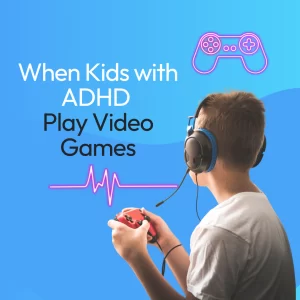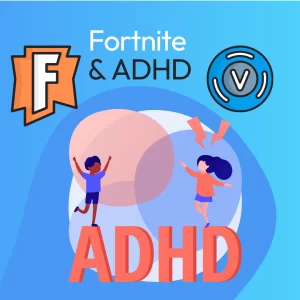“Tell me a little bit about yourself.” It is a standard question when meeting a new person in just about any context. And our idea of “self” can be hard to understand. Whether it is a job interview, party, school, or a first date, we all want to know a little bit about the person we are with. And “tell me about yourself,” seems to be a non-confrontational way to give someone an opportunity to engage with you. In a sense, it makes the other person comfortable and confident knowing that they are in the drivers seat. As much as we ask others about themselves, do we really know ourself?
The Observing Self v. The Conceptualized Self
People often describe themselves in terms of their self-self-percieved role in the world. For example: “I am a nice guy,” “I am a people person,” “I am a hard worker,” or “I am a parent of two kids.” We clump these little snippets of ourselves together in order to form a larger narrative about who we are, and our place(s) in the world. “That’s just the way I am,” is an often popular sentiment. And the conclusion to the sentence “I am a person who _____ ,“ is the beginning of a statement capable of generating scores of reasonable and accurate responses.
This kind of thinking is a slippery slope, however, and it is pretty easy to understand why. Over time we generate dozens of these little self-stories that fuse with our identity and form our persona. Defining who we are. And becoming what we say we are is one of our greatest ambitions. We want to be congruent. We—the observing-self—are trying to be who we—the conceptualized-self—say/think we are. And in the event that, for whatever reason, our personal story about ourselves changes we now have to reconcile that change. To our own self, and the world around us.
Problem of being fused to the conceptualized self:
Think about an example of a girl who graduated at the top of her high school class. She dreamt about becoming a lawyer. She talked with her family and friends about her goals. In college she did well in her classes but during her Junior year she decided that law school was just not a good fit. Can you imagine how difficult this conclusion might be for her? Especially if she has been wrestling privately with this decision for weeks, months, or even years. How difficult would it be to see her friends on summer break and explain the reasons law was not longer her passion?
Well, if she is not fused to her conceptualized-self it should not be terribly difficult. After all, people change their minds all the time. However, in building up this conceptualized version of herself attempts to make changes could be met with great resistance. Not only internally, but externally as well. This might lead a person to attempt to maintain congruence between their attachment to their conceptualized self and their observing-self.
The alternative is being filled with guilt about disinterest in law school. Telling your friends that you had a change of heart seems difficult. Taking yourself seriously may seem more difficult. After all, you abandon a long held belief. What’ might you abandon next? Conversations about your future are something you may not fully understand yourself. And we are expected to explain, or defend these decisions to other people? Friends and family simply want what is best for us. We know that. The difficulty is that they adopted our believe that Law school was what’s best for us. Now, they need to have that believe structure modified.
“Fusion with the conceptualized-self can lead to an attempt to maintain consistency by distorting or reinterpreting events if they seem inconsistent with the self-story.”
What about another example?
Imagine that I believe myself to be a kind person. Believing that I am kind, I may have a very difficult time interpreting my own behavior as unkind. In fact, if I am fused to the concept that I am kind person, I may distort or reinterpret events in order to maintain consistency with my self-story. This is a common attribution error made by people who bully others—‘I couldn’t possibly be a bully, I was just joking around.’ Our goal should be one of stepping away from our conceptualized-self so that we can weaken those attachments, and more realistically assess if we are living according to our values. Again, “fusion with the conceptualized-self can lead to an attempt to maintain consistency by distorting or reinterpreting events if they seem inconsistent with the self-story” (Hayes, Strosahl, & Wilson, 2012).
What can we do to integrate ourselves?
So, how do we battle against the tendency to build attachments to the conceptualized versions of ourselves? The first step is to take an open, loving, and accepting perspective of yourself. Being conscious of your own reality can also help you empathize with others. The second benefit to taking an open perspective of yourself could be that you allow yourself to process changes as they happen, in the moment. In the example of the young pre-law student above, if she took and open/accepting perspective, she may have noticed that her values shifting from law, to something else.
Trouble comes when those kinds of things sneak up on us. And out of nowhere, create chaos in a place where we thought was organized and structured. The second way to make congruent the relationship between the observing-self and conceptualized-self is to align your actions with your personal values. In that case, your observing-self can always look at your conceptualized-self and consider whether your actions are moving you closer or further from your valued endpoint.
An activity to conclude:
We could even use this strategy to better understand if we are making the “right” choices. or not. We know what is “right” based on whether our choices produce an outcome that we find acceptable. Lastly, self-as-context is deeply related to mindfulness. And it might be helpful to try an activity to illustrate the point:
if you are concerned that your conceptualized-self is dominating your observing-self, close your eyes and simply notice your thoughts. Notice where they are around/inside/above/below you. Notice if they are pictures, or sounds, or a movie playing along in your mind. Bring your attention to the fact that your thoughts are ‘over there,’ and you are the one who is observing them. Now, bring your attention to how you are sitting. Notice what you can see, smell, taste, and hear. At each of those points, bring your attention to the fact that you are noticing (e.g., notice how you are sitting, and as you do, be aware that you are noticing).
Bringing ourselves into the present moment in a mindful and conscious way will help us to remain oriented to our observing-self. Which will help us remain de-fused from our conceptualized-self. After all, it is ok to remain flexible throughout our lives while we develop our Values, and attempt to live meaningful lives.




1 thought on “Who am I? Exploring our Self”
Pingback: Where will I be? The long journey ahead... - Stand 4 Kind